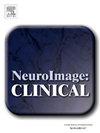Idiopathic normal pressure hydrocephalus: A sulcal morphometry approach to brain phenotype and clinical response
IF 3.6
2区 医学
Q2 NEUROIMAGING
引用次数: 0
Abstract
Idiopathic normal pressure hydrocephalus (iNPH), the leading cause of reversible dementia in older adults, is characterized by urinary incontinence, gait impairment, cognitive decline, and ventriculomegaly. Neuroradiological features rely on visual assessment, including sulcal characteristics. This study applies automatic sulcal-based morphometry to characterize the sulcal phenotype in iNPH and to distinguish responders from non-responders.
We analyzed the sulcal morphology in 32 iNPH patients and 41 healthy controls. Patients were categorized as responders (Resp) or non-responders (nResp) based on gait improvement following a cerebrospinal fluid tap test. A generalized linear model identified the iNPH sulcal phenotype, and a Support Vector Machine (SVM) classifier was applied to distinguish iNPH patients from controls, as well as Resp from nResp.
We found that sulcal depth and widening were the key descriptors of the iNPH brain phenotype. Eight core sulci contributed the most, including compressed central, superior frontal, and frontal intraparietal bilateral sulci, and flattened left calcarine and posterior lateral fissures. An SVM classifier trained on these features effectively differentiated iNPH patients from controls (AUC: 0.933) but had limited accuracy for Resp vs. nResp (AUC: 0.556). Post-hoc analyses showed smaller superior frontal sulcal opening in nResp than in Resp.
This study identified an iNPH neuroradiological phenotype based on sulcal morphology, emphasizing depth and opening as key markers. SVM classifiers trained on different sulci features performed well in differentiating healthy controls from iNPH patients but was less effective for Resp vs. nResp. Future research should investigate more advanced anatomical landmarks in iNPH.
特发性常压脑积水:脑表型和临床反应的脑沟形态测定法
特发性常压脑积水(iNPH)是老年人可逆性痴呆的主要原因,其特征是尿失禁、步态障碍、认知能力下降和脑室肿大。神经放射学特征依赖于视觉评估,包括神经沟特征。本研究应用基于脑沟的自动形态测定法来表征iNPH的脑沟表型,并区分有应答者和无应答者。我们分析了32例iNPH患者和41例健康对照者的脑沟形态。根据脑脊液穿刺试验后的步态改善,将患者分为反应者(Resp)或无反应者(nResp)。采用广义线性模型识别iNPH沟型,并使用支持向量机(SVM)分类器区分iNPH患者与对照组,以及Resp与nResp。我们发现脑沟深度和拓宽是iNPH脑表型的关键描述符。8个核心沟的贡献最大,包括压缩的中央沟、额上沟和额顶内双侧沟,扁平的左跟骨裂和后外侧裂。基于这些特征训练的SVM分类器可以有效地将iNPH患者与对照组区分开来(AUC: 0.933),但对Resp与nResp的准确率有限(AUC: 0.556)。事后分析显示,nResp组的额上沟开口比Resp组小。本研究确定了基于沟形态的iNPH神经放射学表型,强调深度和开放是关键标志。在不同脑沟特征上训练的SVM分类器在区分健康对照和iNPH患者方面表现良好,但在区分Resp和nResp方面效果较差。未来的研究应进一步探讨iNPH的高级解剖标志。
本文章由计算机程序翻译,如有差异,请以英文原文为准。
求助全文
约1分钟内获得全文
求助全文
来源期刊

Neuroimage-Clinical
NEUROIMAGING-
CiteScore
7.50
自引率
4.80%
发文量
368
审稿时长
52 days
期刊介绍:
NeuroImage: Clinical, a journal of diseases, disorders and syndromes involving the Nervous System, provides a vehicle for communicating important advances in the study of abnormal structure-function relationships of the human nervous system based on imaging.
The focus of NeuroImage: Clinical is on defining changes to the brain associated with primary neurologic and psychiatric diseases and disorders of the nervous system as well as behavioral syndromes and developmental conditions. The main criterion for judging papers is the extent of scientific advancement in the understanding of the pathophysiologic mechanisms of diseases and disorders, in identification of functional models that link clinical signs and symptoms with brain function and in the creation of image based tools applicable to a broad range of clinical needs including diagnosis, monitoring and tracking of illness, predicting therapeutic response and development of new treatments. Papers dealing with structure and function in animal models will also be considered if they reveal mechanisms that can be readily translated to human conditions.
 求助内容:
求助内容: 应助结果提醒方式:
应助结果提醒方式:


